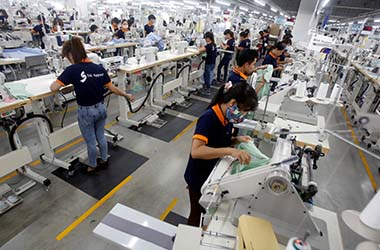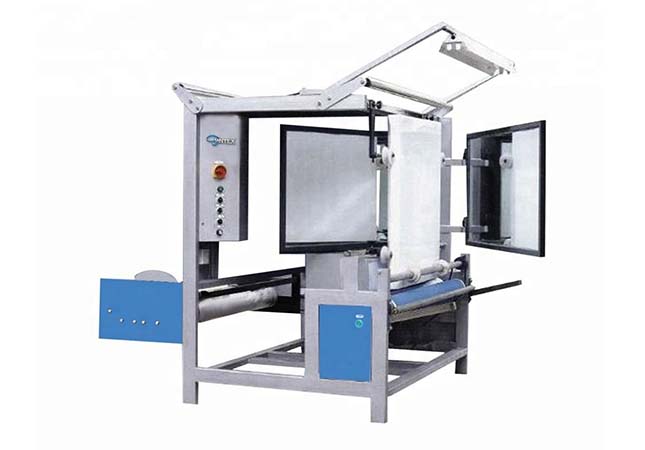Tubular fabric inspection machine is typically designed to accommodate a wide range of different fabric types and sizes, be used to inspect fabrics made from a variety of materials, including cotton, polyester, silk, and nylon, among others. The machine is also able to accommodate fabrics of varying widths and thicknesses, making it an ideal for use in a range of different textile production environments.

Tubular Fabric Inspection Machine Development
The tubular fabric inspection machine has undergone a significant evolution since its introduction in the textile industry. The earliest machines were simple and manual, requiring skilled operators to detect defects in the fabric. However, with advancements in technology, the machines have become increasingly sophisticated, automated, and capable of inspecting fabric at higher speeds and with greater accuracy. In this article, we will discuss the evolution of tubular fabric inspection machines in the textile industry.
1. Early Manual Inspection Machines
The earliest tubular fabric inspection machines were manual and required skilled operators to detect defects in the fabric. These machines consisted of a light table or inspection board, where the fabric was laid flat, and a magnifying glass or other optical device was used to inspect the fabric for defects. The operators were trained to identify defects such as holes, stains, or misprints, and mark them with chalk or other markers for further inspection or correction. These machines were slow, inefficient, and prone to human error, which made the inspection process time-consuming and expensive.
2. Semi-Automated Inspection Machines
In the 1960s and 1970s, semi-automated tubular fabric inspection machines were developed, which reduced the need for manual inspection and increased the inspection speed. These machines were designed to inspect the fabric as it passed through the machine, using cameras and sensors to detect defects automatically. The operators would review the images on a screen and mark any defects for further inspection or correction. These machines were faster and more efficient than the manual inspection machines, but still required a significant amount of manual labor and were prone to human error.
3. Fully-Automated Inspection Machines
In the 1980s and 1990s, fully automated tubular fabric inspection machines were introduced, which revolutionized the inspection process. These machines used computer technology and image processing software to detect and classify defects automatically, without the need for human intervention. The fabric was fed into the machine, and cameras captured high-resolution images of the fabric as it passed through the machine. The images were then analyzed by software, which detected and classified defects according to their size, shape, and location. The machine then marked the defects with ink or other markers, allowing the operators to identify and correct them quickly and efficiently.
The fully automated machines were much faster and more accurate than the earlier manual and semi-automated machines, and significantly reduced the labor costs associated with fabric inspection. They were also more reliable and consistent in detecting defects, leading to improved product quality and reduced waste. The machines were also able to handle a wider range of fabrics, including knits, woven fabrics, and nonwovens, making them more versatile than earlier models.
Advanced Inspection Technologies
In recent years, advanced inspection technologies have been developed to further enhance the performance and accuracy of tubular fabric inspection machines. These technologies include artificial intelligence, machine learning, and digital imaging. With these technologies, the machines are capable of learning from previous inspections and improving their accuracy over time. They are also able to detect and classify more complex defects, such as pattern repeats and color variations.
Another advanced technology is 3D imaging, which enables the machines to detect defects in three dimensions, providing more detailed and accurate information about the defects. This technology is particularly useful for fabrics with complex patterns or textures, where defects may be difficult to detect with 2D imaging.
ST-TFIM Tubular Fabric Inspection Machine

The ST-TFIM Tubular Fabric Inspection Machine is designed for efficient inspection of tubular fabric on both sides in a single pass operation. The machine has the following features:
1. Fabric Rolling Drawer: The upper delivery mode reduces fabric tension, making it more convenient for inspection.
2. Controllable Inspecting Speed: The inspecting speed can be adjusted using an inverter to match the requirements.
3. High Voltage Dispenser for Lighting System: This device provides electricity power wirelessly to the fabric checking box.
4. Multi-size Inspecting Lighting Cabinets: The machine can handle fabric widths ranging from 18” to 50” with the help of a magnetic block in the bottom that suspends automatically against the roller to eliminate crease marks.
5. Two Modes of Fabric Layout: The machine can operate fabrics from roll to roll or plaited.
6. Easy Operation Panel: The machine can be operated smoothly with just a few push buttons.
7. Remote Foot Pedal: This feature is included for more convenient operation.
As a reputable textile machinery manufacturer with a rich history in automation and intelligent manufacturing technology of textile and warehousing equipment, SUNTECH Textile Machinery possesses cutting-edge core technologies that are recognized globally.
SUNTECH’s products cover the textile manufacturing and handling process of almost fabric types, in which pinking machine, non woven machine, beam truck, meltblown machine, fabric cutting machine, motorized beam trolley, beam storage, warp tying machine are the most popular machines and material handling equipment.
SUNTECH Textile Machinery leads the textile industry with our innovation and experience! Quotes and Cooperation are Highly Welcome!




